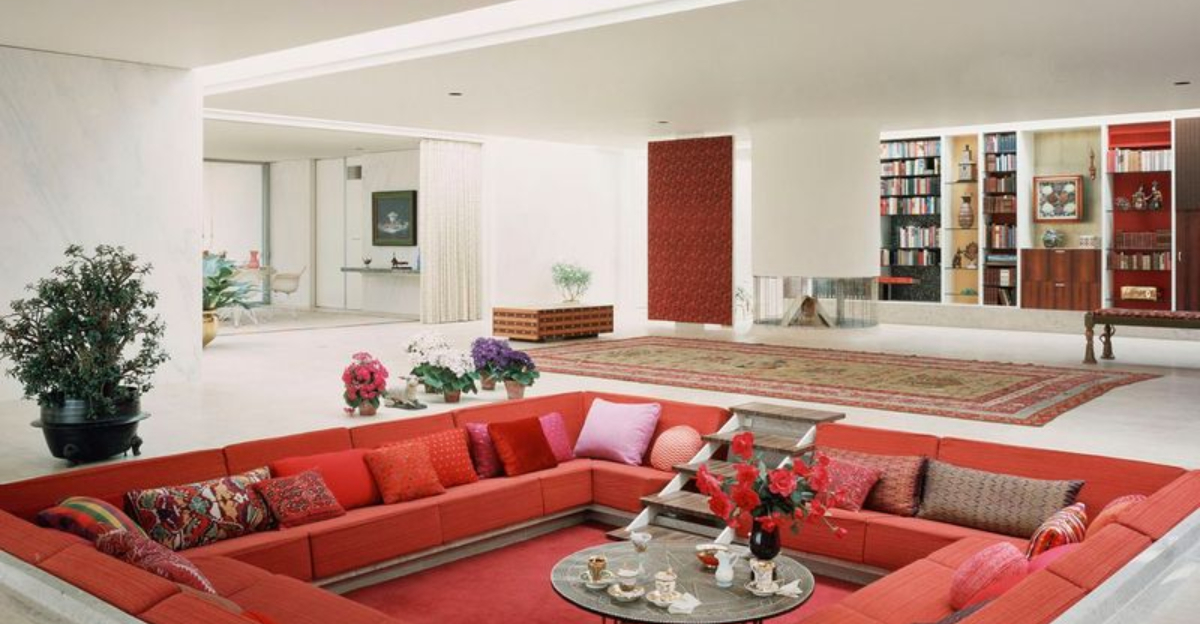Our homes tell stories of the times we’ve lived through, from shag carpets to subway tiles. Some design choices have stood the test of time, becoming beloved classics that designers still reference today. Others make us cringe when flipping through old family photos.
Let’s celebrate the genius and gently roast the questionable as we explore the rollercoaster of interior design through the decades.
1. Mid-Century Modern Magic (1950s-60s)
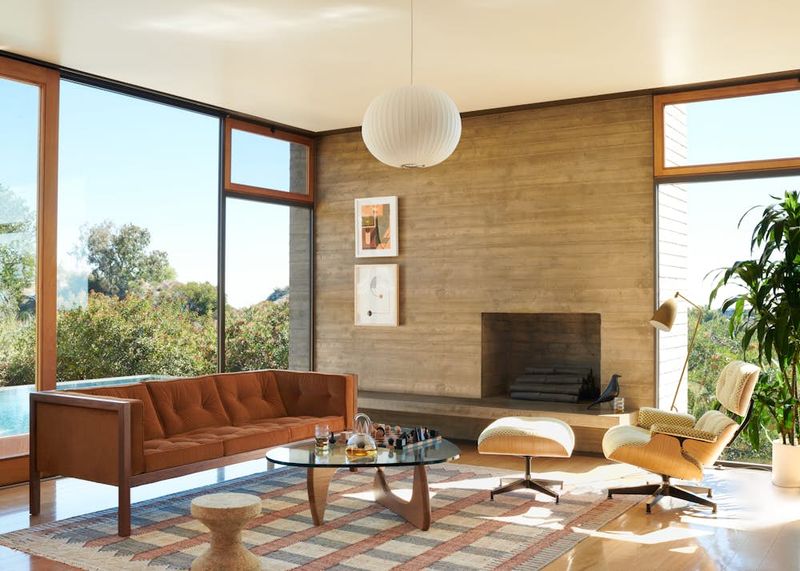
Clean lines and organic curves defined this revolutionary style that still makes design enthusiasts swoon. Inspired by post-war optimism, these pieces combined function with sculptural forms that looked plucked from The Jetsons.
Eames chairs, tulip tables, and walnut credenzas weren’t just furniture—they were functional art. Today’s designers continue raiding grandma’s attic for authentic pieces that somehow look more modern than most contemporary designs.
2. Conversation Pits (1960s-70s)
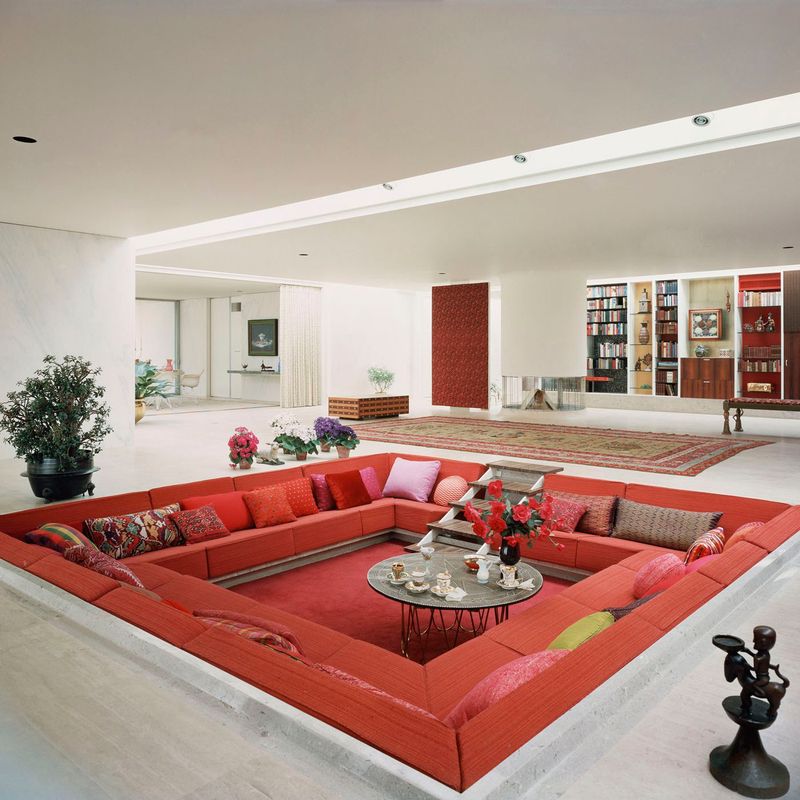
Sunken living areas surrounded by built-in seating were the ultimate party zones. These architectural features transformed formal living rooms into intimate gathering spaces where guests could lounge, cocktail in hand, legs stretched toward the central coffee table or fireplace.
The genius was in the forced togetherness—no hiding in corners at these parties! While they largely disappeared by the 80s, today’s designers are bringing back modernized versions for tech-weary homeowners craving connection.
3. Memphis Design Movement (1980s)
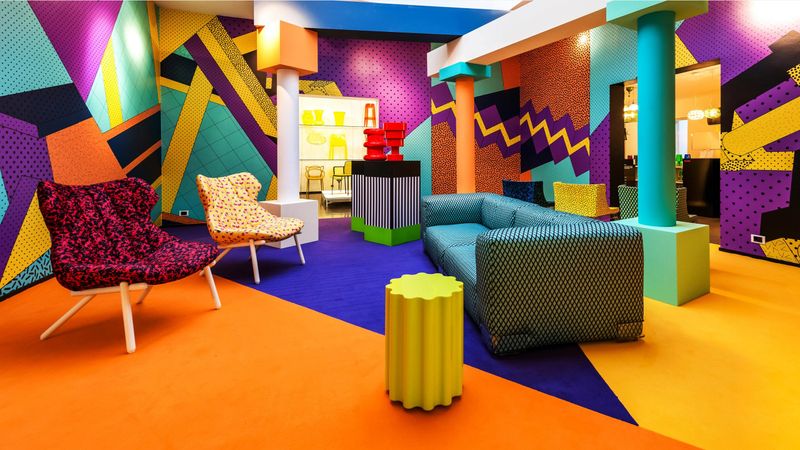
Squiggly lines, clashing colors, and geometric shapes that looked like Saved by the Bell’s opening credits exploded onto the design scene. Created by Italian designer Ettore Sottsass, Memphis thumbed its nose at minimalism with playful patterns and forms that screamed “more is more!”
While initially polarizing, this bold aesthetic has experienced a massive revival. Today’s designers cherry-pick Memphis elements to inject personality into otherwise restrained spaces—proving sometimes we all need a little design rebellion.
4. Scandinavian Simplicity (1990s-Present)
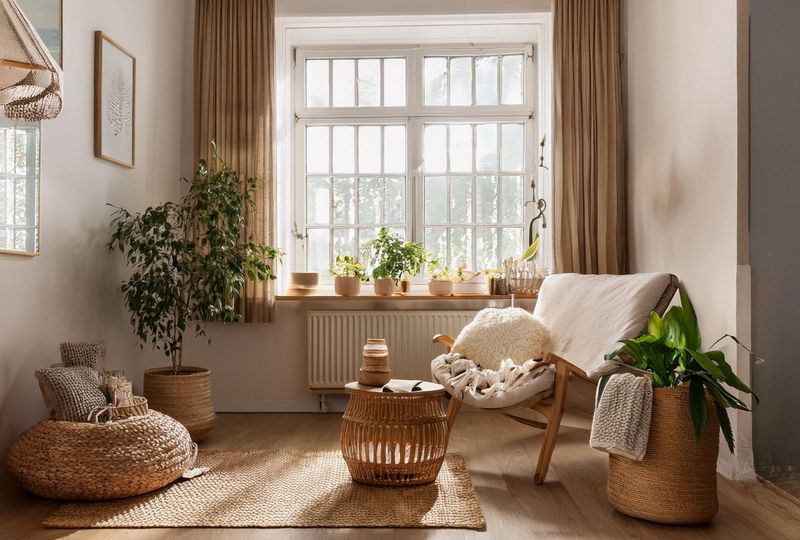
IKEA didn’t conquer the world by accident. The Nordic approach to design—clean lines, natural materials, and functional beauty—offered an antidote to excess. White walls became canvases for light rather than clutter collectors.
Blonde woods, textural contrast, and the concept of “hygge” (coziness) transformed homes into sanctuaries. Unlike fleeting trends, Scandinavian design keeps evolving while maintaining its core principles: beauty in simplicity and function without sacrificing form.
5. Indoor Plants Revival (1970s & 2010s-Present)
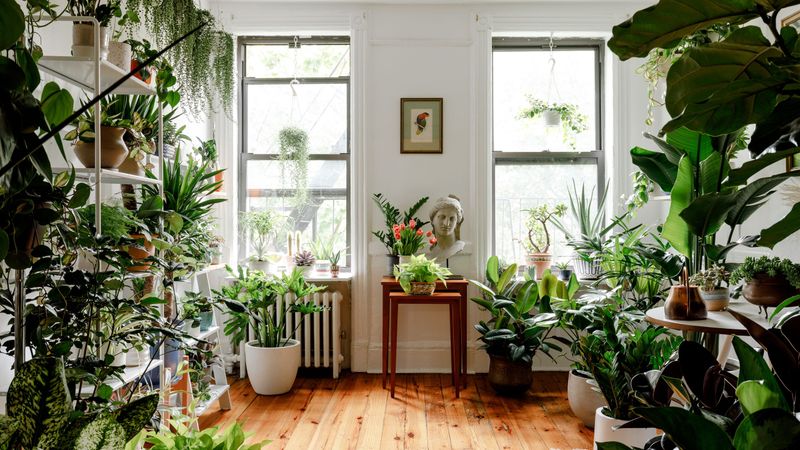
Houseplants have enjoyed two golden eras—first in the macramé-heavy 70s, then roaring back with the Instagram generation. Beyond aesthetics, they connect concrete jungles to the natural world, improving both air quality and mental health.
From statement monstera leaves to collections of tiny succulents, plants add living texture to any design style. The revival shows no signs of wilting, with rare specimens becoming status symbols and “plant parents” proudly displaying their green credentials on social media.
6. Art Deco Glamour (1920s-30s)

Gatsby-era opulence never truly faded from designer playbooks. Bold geometric patterns, luxe materials, and symmetrical designs captured the optimism and glamour of the Roaring Twenties with unapologetic flair.
Chrome details, lacquered surfaces, and velvet upholstery created spaces that felt simultaneously modern and timeless. Contemporary designers regularly borrow Art Deco elements—sunburst mirrors, channel-tufted furniture, brass accents—to add sophistication and drama to otherwise understated rooms.
7. Open Shelving (2000s-Present)
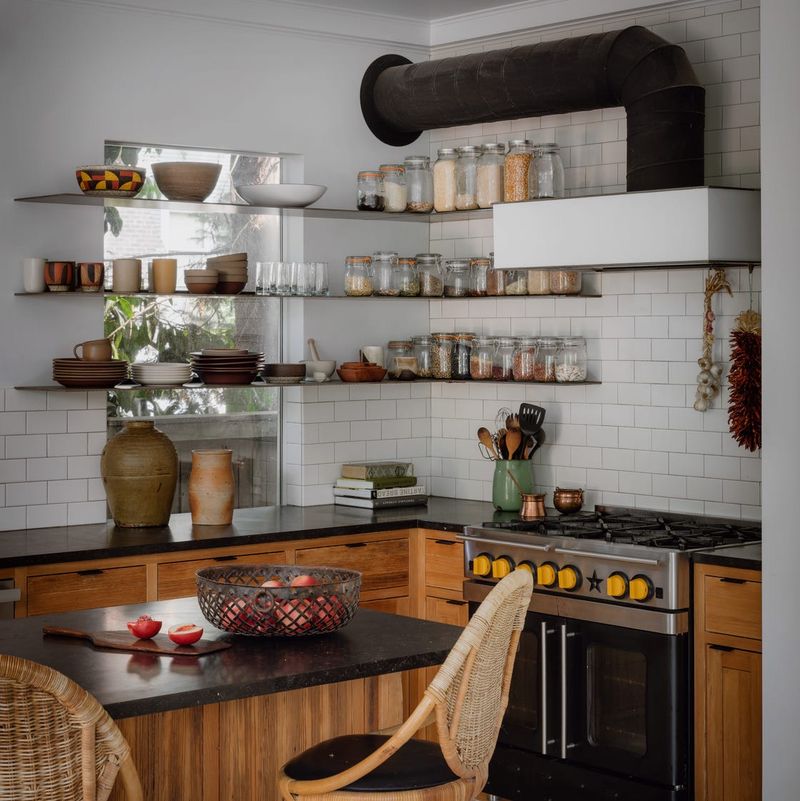
Ripping out upper cabinets was a radical move that transformed kitchens from utilitarian workspaces to design showcases. Suddenly, everyday dishes became display-worthy, and cooking spaces felt airier and more connected to living areas.
The genius lies in its dual purpose—both practical storage and personality showcase. While critics point to dust concerns, designers counter with careful curation advice: display only what’s beautiful and frequently used. The trend has expanded beyond kitchens to every room where storage can double as display.
8. Statement Wallpaper (1960s & 2010s-Present)
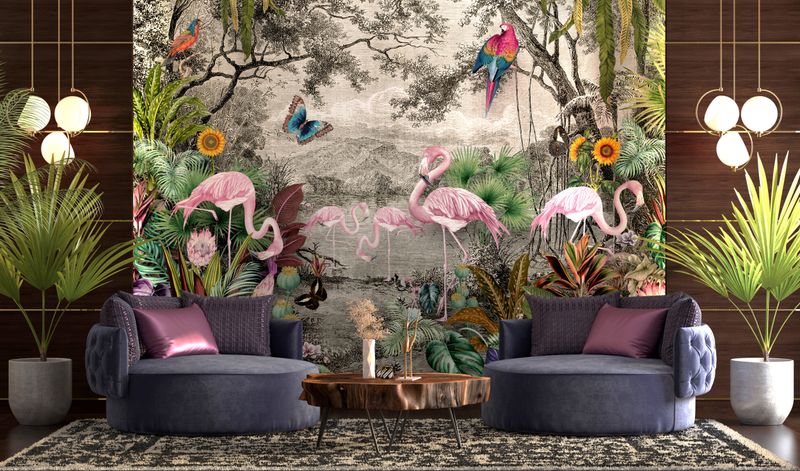
Wallpaper’s renaissance rescued walls from bland paint purgatory. Modern printing techniques created possibilities the 60s could only dream of—photorealistic forests, hand-drawn illustrations, and textures that trick the eye.
Unlike grandma’s fussy florals, today’s papers function as large-scale art installations. Designers use them strategically for maximum impact: powder rooms transformed into jewel boxes, bedroom headboard walls becoming focal points. The commitment-phobic can rejoice in peel-and-stick options that make bold choices less permanent.
9. Adaptive Reuse Materials (1990s-Present)
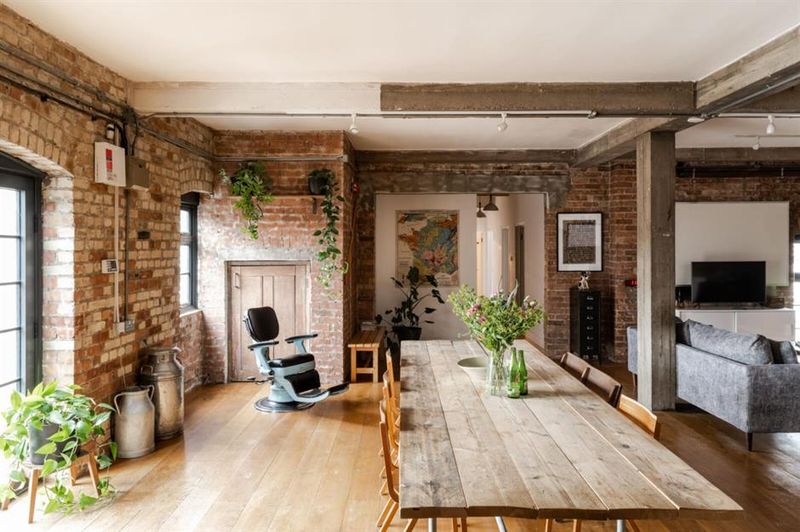
Exposed brick, factory windows, and reclaimed wood flooring tell stories no new materials can match. The movement to repurpose industrial elements into residential spaces began with urban loft conversions but quickly spread to suburban homes craving character.
Beyond aesthetic appeal, these materials bring environmental benefits through reuse. Designers mix raw textures with refined elements for balanced contrast—rough beams above sleek kitchens, factory lights over dining tables. This approach creates spaces that feel simultaneously contemporary and rooted in history.
10. Global Eclectic Style (1970s & 2000s-Present)
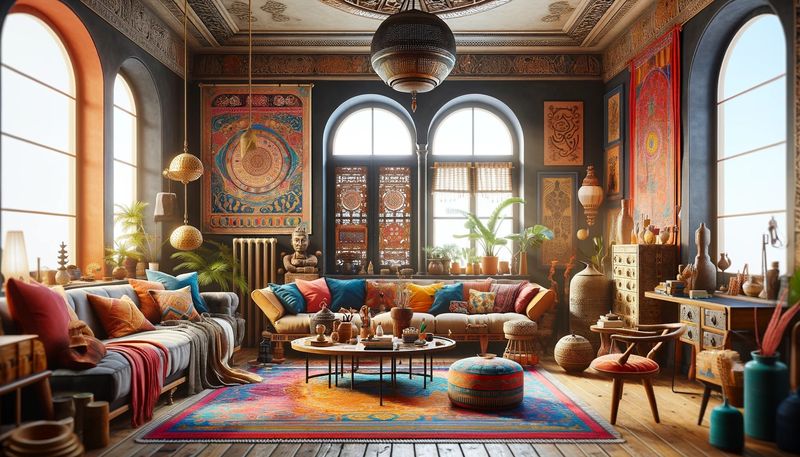
Worldly interiors that mix treasures from different cultures create spaces impossible to replicate. First embraced by well-traveled bohemians in the 70s, the style has evolved from hippie crash pads to sophisticated spaces that tell personal stories.
Moroccan rugs layered over seagrass, Indian textiles draped on modern sofas, African baskets displayed as art—these combinations create visual interest while celebrating craftsmanship. Unlike mass-produced themed decor, authentic global style evolves organically through actual travels and meaningful connections to different places and traditions.
11. Popcorn Ceilings (1960s-80s)
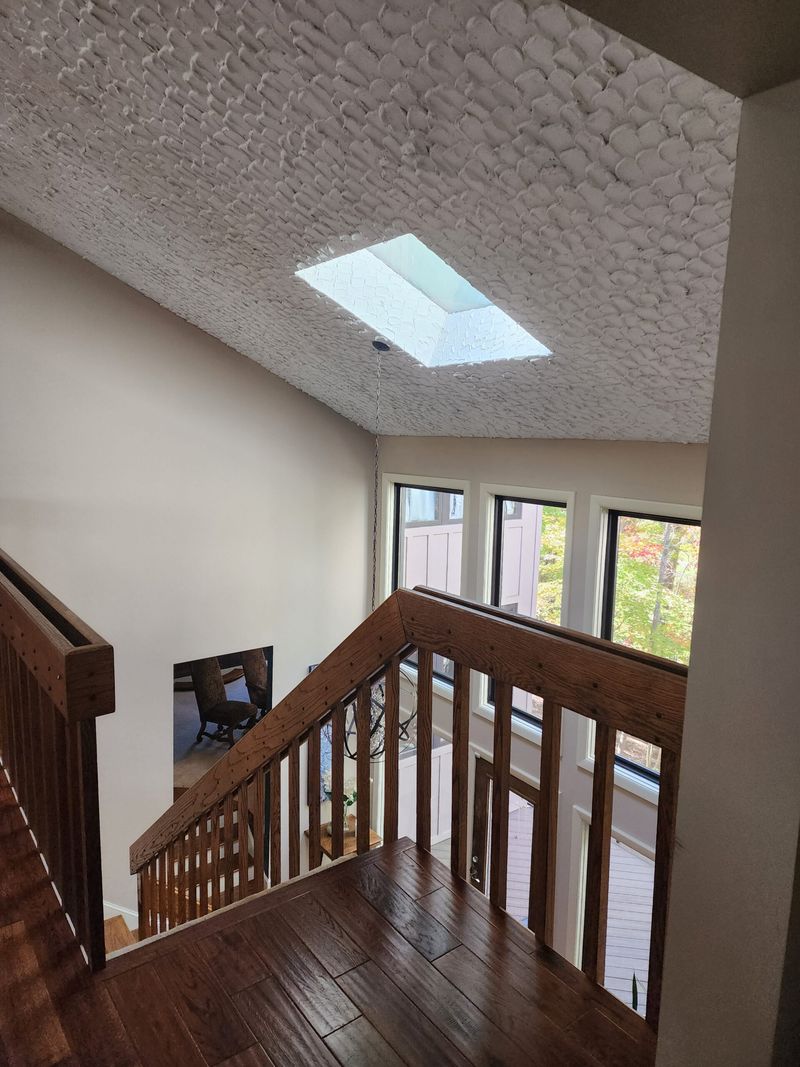
Nothing says “dated home” faster than these bumpy monstrosities sprayed across ceilings nationwide. Originally touted as sound-dampening and hiding imperfections, they instead became dust traps that were impossible to clean.
The cottage cheese texture cast unflattering shadows and became yellowed time capsules of cigarette smoke. Most horrifying was the pre-1980s versions containing asbestos, turning simple removal into hazmat situations. Today’s homeowners pay good money to have these textured nightmares scraped away for good reason.
12. Avocado Appliances (1970s)
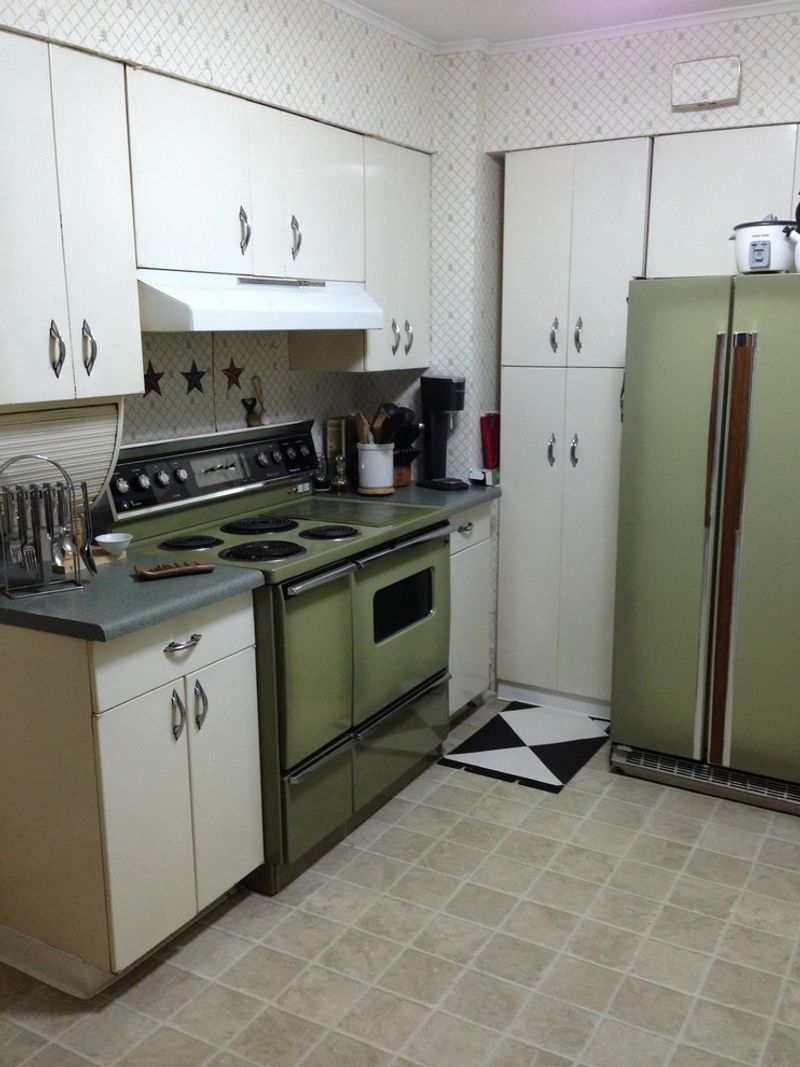
Harvest gold, avocado green, and burnt orange invaded kitchens like invasive species. These murky, military-surplus-inspired hues transformed cooking spaces into visual assault zones—especially when paired with equally bold wallpaper and linoleum.
The commitment level was staggering: matching refrigerators, stoves, dishwashers, and even sinks! While today’s designers occasionally reference these colors in small doses, the full-kitchen commitment represents peak trend-following that homeowners spent decades and thousands undoing.
13. Wall-to-Wall Shag Carpeting (1970s)
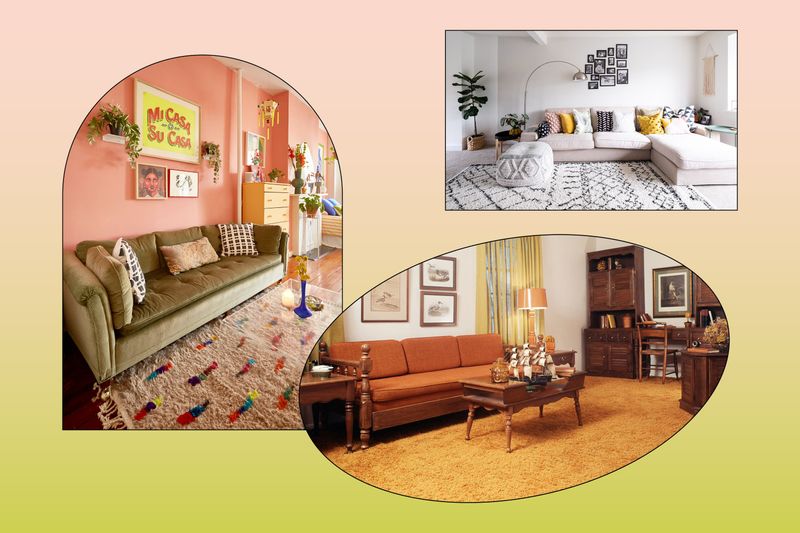
Ankle-deep carpeting that resembled Muppet pelts swallowed living rooms whole—and occasionally small pets too. These plush floors became magnets for dust, allergens, spills, and unspeakable odors that no amount of vacuuming could fully extract.
The ultimate sin? Installing shag in bathrooms where moisture created science experiments beneath the fibers. While modern rugs incorporate shag textures in contained areas, the wall-to-wall application remains a cautionary tale of prioritizing trend over practicality.
14. Tuscan Kitchen Takeover (1990s-2000s)
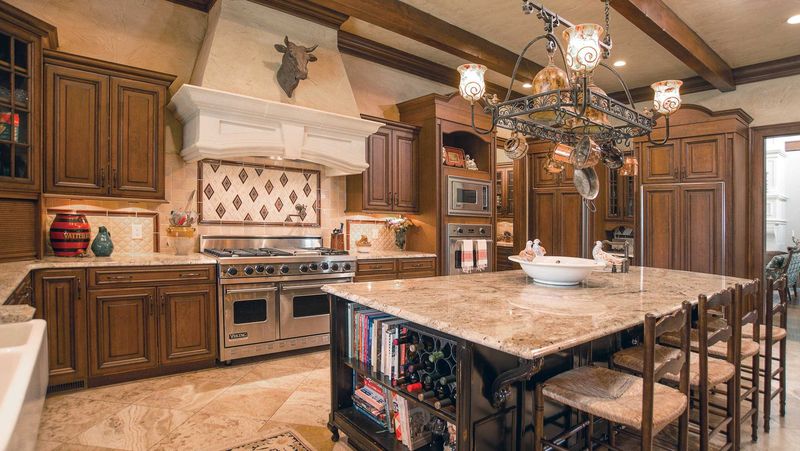
Suburban America’s bizarre obsession with faux-Mediterranean styling reached fever pitch in kitchens. Suddenly, new-build homes in Minnesota featured distressed cabinets, faux-painted walls, and enough wrought iron to build a small Eiffel Tower.
Granite countertops in amber tones completed the look, often flecked with gold like a Renaissance painting gone wrong. The ultimate Tuscan kitchen signifier? A giant grape or wine theme, complete with “Live, Laugh, Love” stenciled on a soffit. This trend aged like open wine—quickly turning from charming to vinegar.
15. Bathroom Carpet (1970s-80s)
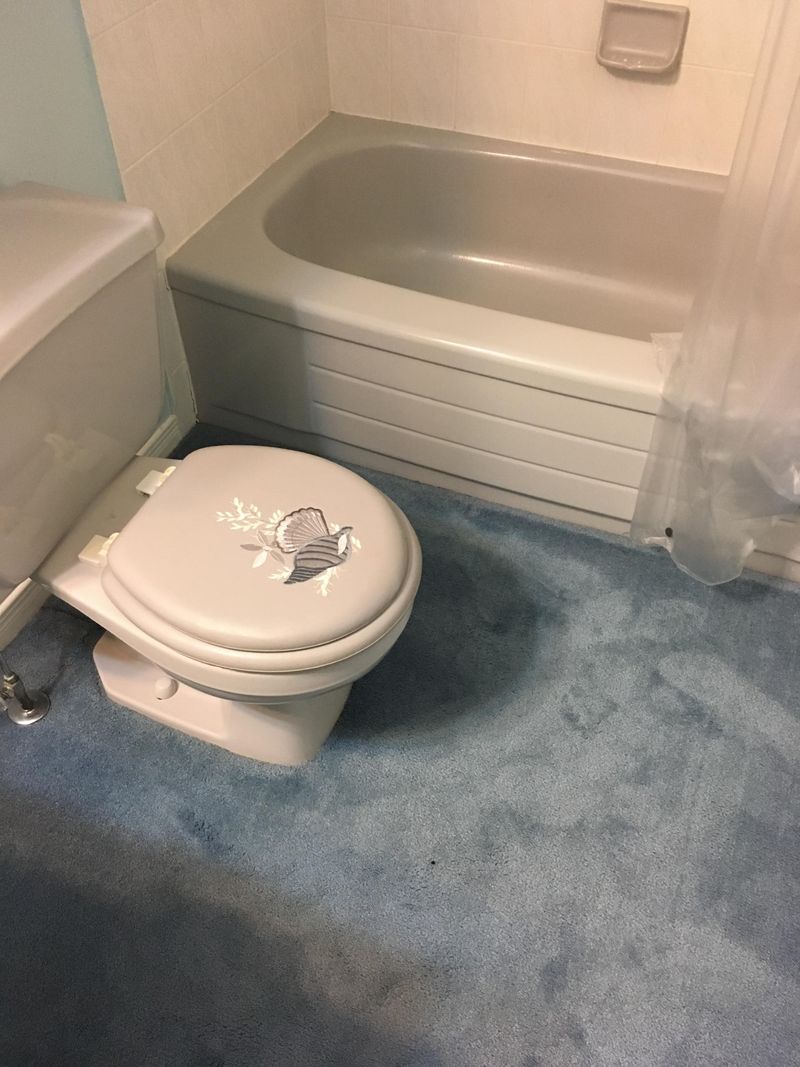
Someone decided putting absorbent fabric around toilets was a brilliant idea. This horrifying trend saw wall-to-wall carpeting installed in bathrooms nationwide, creating perfect habitats for mildew, bacteria, and odors that no amount of air freshener could mask.
The most committed homeowners even carpeted around toilet bases and bathtubs! While marketed as cozy underfoot, these moisture-trapping nightmares quickly became health hazards. Modern designers universally reject bathroom carpeting, opting instead for waterproof luxury vinyl or classic tile that won’t harbor yesterday’s shower water.
16. Mirrored Walls (1970s-80s)
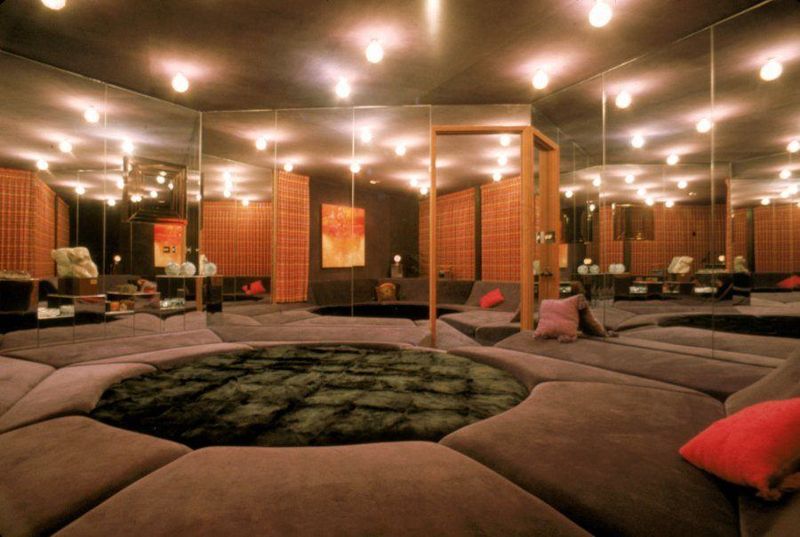
Disco-era homes turned into funhouse mazes with wall-to-wall mirrors. Intended to create illusions of space, they instead generated disorienting reflections and showcased every dust particle from seventeen different angles.
Often installed in tiles with beveled edges or smoked glass variants, these mirrors transformed dining rooms into narcissist paradises. The ultimate mirror crime? Ceiling installation above beds—a design choice that screams “1970s film star” or “questionable motel.” Today’s designers limit mirrors to strategic placement rather than wall-consuming expanses.
17. Waterbeds (1970s-80s)

Nothing says “I make questionable choices” quite like filling a vinyl bladder with 200 gallons of water and sleeping on it. These sloshing sleep surfaces required heating elements to prevent sleepers from experiencing hypothermia and special frames to contain potential floods.
The ultimate waterbed featured built-in headboards with mirrors, lights, and storage—resembling the command center of a budget spaceship. Beyond the constant wave motion and temperature issues, the looming disaster of punctures kept homeowners in constant anxiety. No wonder these liquid mattresses evaporated from homes by the 1990s.
18. Wallpaper Borders (1980s-90s)
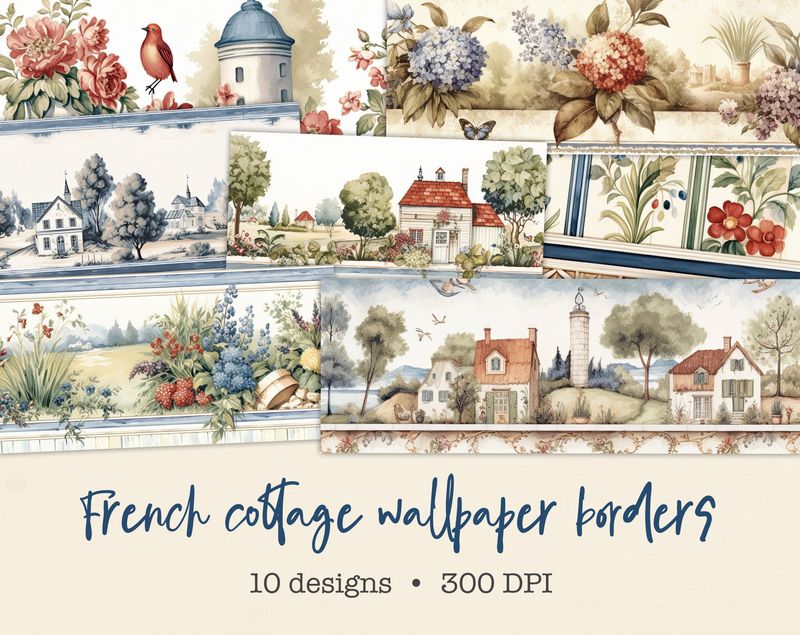
Thin strips of patterned paper that wrapped rooms like gift ribbons became the crown molding for people afraid of power tools. These borders featured everything from country geese wearing bonnets to nautical ropes and Victorian flowers—often in rooms with absolutely no thematic connection.
The kitchen border epidemic was particularly severe, with apple patterns and chef motifs circling above cabinets. The worst offenders ran borders through multiple rooms regardless of color schemes or wall treatments. Removing these sticky nightmares requires patience, scoring tools, and specialized solvents—a fitting punishment for trend-followers.
19. Vertical Blinds (1980s-90s)

Apartment dwellers still battle these plastic strips that clack together like skeleton fingers in the slightest breeze. Marketed as modern window solutions, vertical blinds excelled at collecting dust in unreachable crevices and becoming permanently kinked from curious pets or children.
The control mechanisms inevitably failed, leaving blinds permanently askew like bad teeth. White plastic versions yellowed dramatically, while fabric options became dust traps impossible to clean. Modern designers have mercifully replaced these with roman shades, curtain panels, or cellular blinds that don’t sound like haunted wind chimes.
20. Sponge Painting (1990s)
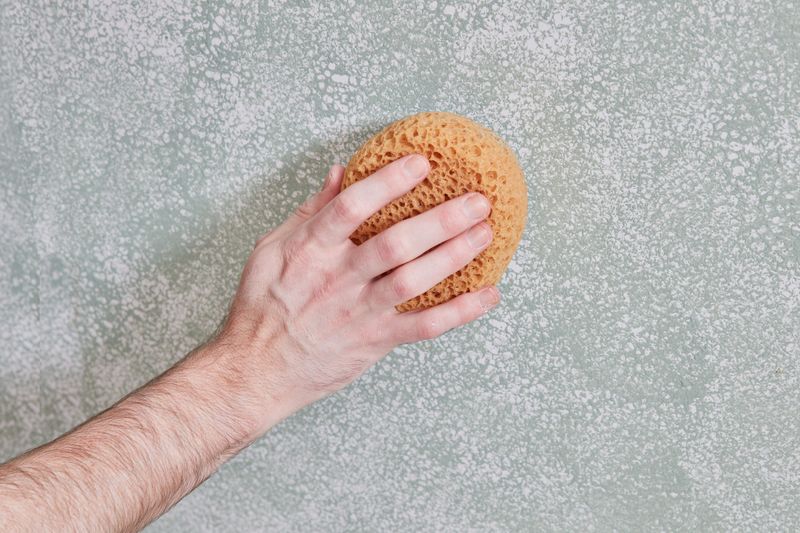
DIY warriors armed with sea sponges transformed smooth walls into textured catastrophes resembling moldy cheese. This faux-finish technique promised Tuscan villa vibes but delivered hepatitis waiting room aesthetics instead.
Often executed in bizarre color combinations like salmon pink over mint green, the technique required minimal skill but maximum confidence. The worst examples incorporated multiple colors, glitter, or metallic paints for extra visual confusion. Removing these textured nightmares requires either aggressive sanding or complete drywall replacement—karma for 90s weekend warriors.

